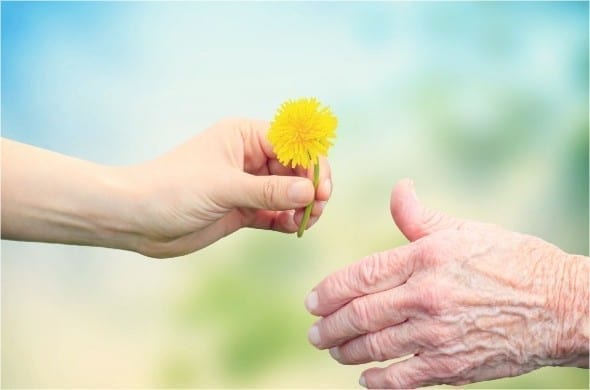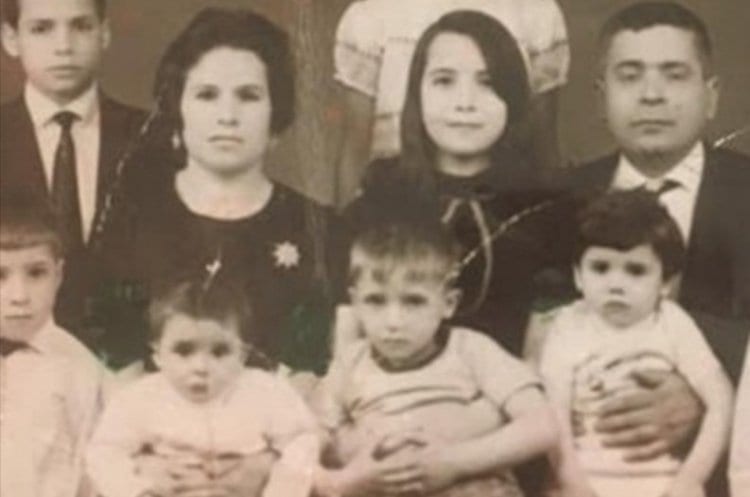When Rina and Chaim were expecting Ayala, their obstetrician offered them the standard genetic testing panel for Ashkenazi Jews. Along with screening for diseases like TaySachs and Canavan, the panel included a new disorder, added just six months earlier— congenital hyperinsulinism (HI), which causes the insulin cells of the pancreas (also known as beta cells) to secrete too much insulin, and at the wrong time.
Although HI is extremely rare—most children’s hospitals only see one to two cases a year—problems with insulin distribution can cause either extremely low or extremely high blood sugar; if not monitored correctly, either condition can cause seizures or permanent brain damage. Initially only Rina was tested, and the results showed that she was a carrier for HI.
The next step, the genetic counselor said, was to test Chaim’s blood and a sample of fetal tissue. “At that point, I really did not think anything of it,” Rina recalls, “because what are the chances that two people are going to be the carriers?” In their case the chances, unfortunately, were high.
A few weeks later, the Kagans learned that not only was Chaim also a carrier but that their unborn baby had been affected by the disease. “Of course,” she says, “we started to panic. We were absolutely terrified. You’re hearing words like ‘seizures,’ ‘brain damage,’ ‘blindness,’ and we just had no idea what to expect.”
The genetic counselor they were working with referred them to Children’s Hospital of Philadelphia (CHOP), home of the largest congenital hyperinsulinism center in the United States. Rina and Chaim consulted with the team at the HI center, which included endocrinologists, genetic counselors, pediatric surgeons and radiologists, who gave them a picture of what HI was going to look like: round-the-clock monitoring of the baby’s blood sugar, a gastronomic tube that would distribute insulin into her bloodstream, and most likely, surgery to have the baby’s pancreas removed.
The procedure would help somewhat with the overproduction of insulin, but her body would still be unable to regulate the insulin secreted by her endocrine system. Because of the high risks involved, the Kagans and the team agreed that the baby would be born at CHOP’s Special Delivery Unit, an obstetric wing in the hospital for babies with health issues that are known before delivery, such as heart defects or spina bifida.
Most HI babies in the United States are born in the SDU, and Rina would receive all of her obstetric care there. The gravity of their situation hit Rina and Chaim hard. “We were really angry. We were like, ‘This isn’t fair—why is this happening to us?’ And all of this was happening as we were really just becoming more observant religiously. We’re doing everything we’re supposed to be doing; why is this happening this to us? We just didn’t get it.” Particularly painful was the lack of support from those close to them. “People, including people in our own family, said, ‘It’s going to be so hard; how can you handle this?’ We just really didn’t know what to expect.”
However, unlike other families of children with HI who travel thousands of miles to receive care at CHOP, the Kagans lived in Cherry Hill, NJ, only a 15-minute drive from the hospital. “It was unbelievable,” Rina said. “There were people who moved here for months after their babies were born and were at the Ronald McDonald House, and I was going from my office to my OB appointments, and then going back to work [as a marketing manager]. Our lives were really disrupted very little.” Ayala finally arrived three and a half weeks early via C-section, which was planned to save Rina the stress of labor.
By all accounts, says Rina, it was an unusual birth. “You’re in a big room and there’s a team of neonatologists, endocrinologists and all these people waiting for her to come out.” As soon as Ayala was born, the team tested her sugar, which was already low. Her treatment began within a matter of minutes; from the SCU she was transferred to the NICU, where she was monitored 24 hours a day.
A central line was put into her thigh that carried high concentrations of dextrose (sugar water) up to her chest, near her heart, for easy access into the bloodstream. When she was 12 days old, Ayala went into surgery to have 98 percent of her pancreas removed, after which she spent the next month under observation.
Considering Ayala’s need for medical attention just seconds after birth, it’s chilling to consider what could happen to a baby born with HI when neither the parents nor the medical team know about it beforehand. As Rina states, “Usually they’ll notice something is wrong with the baby—either they’re not eating, or in the worst-case scenario they’re having seizures… Eventually they’ll find their way to CHOP or another hospital once they figure out that something isn’t right, but it can take weeks—it can take months—until they figure out what’s going on.” For this reason, more and more states are requiring that babies’ blood sugar be tested at birth.
Even if they discover HI, however, it doesn’t guarantee the baby will get the help he or she needs, at least not immediately. Many regular hospitals assume they can handle what appears to be a simple blood-sugar issue, but it is actually much more complicated and dangerous.
In those cases, says Rina, “people really have to fight and advocate for their children to get them to CHOP…[or wherever] they need to go. Luckily, we never needed to do that. And we never lost any time because we knew what she had.” Their month in the NICU changed the Kagans’ initial feelings about their daughter’s condition. “At CHOP, they’re treating really critical kids,” Rina recalls. “You see a lot of just really horrible, really cruel situations that you would never, ever want to be in. You can’t imagine how people deal with them.
Once we were in the hospital and we had this baby who was big and beautiful and looked really healthy—and who really was totally healthy except for this condition—our perspective went very quickly from ‘What did we do to deserve this?’ to ‘Thank G-d this is all we’re dealing with.’” The outpouring of chesed and support from the Cherry Hill community also impacted their emunah and their relationship to Judaism. “Being able to have a connection to a community and being able to have a connection to Hashem definitely got us through this… [It] gave us strength I don’t know if we would have had otherwise.
It was an extremely scary time, and we just felt cushioned and protected… We really did not feel as alone as we could have been. That experience definitely helped us to move forward in our observance.” When it was time to bring Ayala home, the doctors told the Kagans that she would have to be closely monitored every day, indefinitely. “What we had drilled into us from the team at CHOP was ‘Your mission in life is to keep [her] from having seizures.” It was a daunting task, but Rina and Chaim made it their primary focus.
Ayala was given a g-tube, or feeding tube, that pumped dextrose into her body 24 hours a day. Wherever she went, her pump, held in a small backpack, went with her—even in the bathtub. Ayala had to have a nurse to monitor her throughout the day. At ten months old, the doctors found that she was able to go without the dextrose during the day but still needed to be hooked up to the pump for 12 hours at night. This is still the case today, three years later.
Thankfully, she has never had a seizure, but the Kagans still have to be vigilant. Sometimes her blood sugar will jump from one pole to another for no reason at all. Other times, says Rina, “it’s very easy. Ayala has had periods of four, five months where she’s perfect, and then she’ll get a stomach bug and end up in the hospital. Her body just can’t handle it.”
Over time, the Kagans have learned to balance the demands of caring for Ayala with their other family responsibilities. “We’ve been able to figure out what the priorities are,” says Rina, “and having a clean house is not really one of them.” Within 35 months of Ayala’s birth, she had two little sisters, Ora and Gila.
When Ora was born completely healthy, the Kagans were relieved. Considering the 25 percent chance that any of their children would have HI, they felt the odds had tipped in their favor. When they were expecting Gila, however, they learned that she not only had HI but that her case was even more severe than Ayala’s. “We were upset,” Rina recalls, “but we knew we would know how to deal with it. But then there would be moments of absolute panic: ‘How are we going to do two g-tubes and two pumps? What if they both get sick at the same time?” When Gila was born, her counts were dangerously low (“less than 10, which is like you’re barely alive”), and like Ayala, she had her pancreas removed at ten days old.
Interestingly, Gila’s condition after surgery turned out to be exactly the opposite of her sister’s; whereas Ayala’s high insulin levels result in low blood sugar, Gila’s body makes too little insulin, so her counts are high. The Kagans, therefore, have two children with the same disease but whose needs are very different. Gila also needs a full-time nurse, but her regimen is even stricter than Ayala’s: Blood-sugar checks and feedings every three hours, insulin shots up to four times a day and if needed, dextrose through the g-tube. Gila’s counts have rocketed and dropped in the first three months of her life, but thankfully, there have been no seizures.
Ayala’s and Gila’s medical needs present challenges that most families never have to think about. Going away for a weekend trip is impossible, at least at this point, because the Kagans can’t be more than three hours away from CHOP at any given time. This lack of mobility certainly has an impact on the other children, as well as on Chaim and Rina’s marriage.
With their schedules strained by the need to juggle work, the children and the girls’ medical regimen, by the end of the day, says Rina, “we’re exhausted.” However, it has also been a growth experience, particularly for Ayala’s ten-year-old sister, Miriam—one that she might not have had otherwise. “She is amazing,” Rina muses. “She’s such a huge help. She knows how to check sugar and hook the girls up to their pumps… I think this has helped her to get a purpose. Her role in the family is really important and she knows that; she knows that she’s needed. I think it’s helped her to become a lot more responsible.”
Another challenge has been dealing with other people’s insensitive comments. “People say things,” Rina tells me. “They mean well, but they’re ignorant.” When Rina told one woman about Ayala’s condition, the woman responded, “Isn’t there some kind of shot you can get so that this doesn’t happen?” People also mistake Ayala’s condition for an overblown case of hypoglycemia, telling the Kagans that a glass of orange juice should do the trick.
Even invitations to community or social events are complicated; for Rina and Chaim, it’s not a simple matter of finding a babysitter. “My children need to be with us or with a nurse. Period.” It took time for Rina to get used to the sidelong glances and outright stares that followed her when she took Ayala out, with the pump and the nurse in tow. “I’d get really, really upset, to the point where I almost walked up to people and confronted them.”
Rina admits that there was a level of embarrassment on her part as well; she wanted the normalcy of being able to go out with her children without a nurse and all the extra accoutrements her children’s condition required. “[Chaim said,] ‘You know what? It’s their problem… Who cares what they think?’ And I got to that point, but it took me a long time… I have learned that I need to do what I need to do to keep my children safe, and that’s it.” As for Ayala, living with HI is all she knows. Just recently, during a visit to the doctor, Ayala’s little sister Ora ran out of the room. Chaim quickly ran out to get her.
Not knowing where he was, Ayala reached into the diaper bag for her pump and the red emergency bag with her syringe (she needs injections if her counts get too low) and went to look for her father. “We never told her to do that,” Rina says, wonder-struck. “She just somehow knew, ‘This is what I need to have with me.’ It’s amazing to see this little three-yearold with such presence of mind.” Indeed, when I spent time with Ayala, I was impressed by her placidity and wisdom, and from what Rina tells me, every child with HI she has met has the same qualities.
In many ways, though, Ayala is also your typical three-year-old; she plays with dolls and dress-up clothes, and loves to snack on Bamba. At some point, it will get better. Most children born with HI who have had surgery become type 1 diabetics by the time they reach puberty. Compared to the demanding regimen of managing HI, type 1 diabetes is a walk in the park. For the Kagans, says Rina, “it’s really just a matter of getting through the next eight to 12 years.” While at CHOP with Gila, the family befriended a young woman who was born with HI and is now a senior at Muhlenberg University. A type 1 diabetic, the young woman also comes to CHOP periodically for internships.
On one of the days this young woman spent with the Kagans, Rina’s father happened to be at the hospital with them. He began crying and told her, “I feel like I’m looking at the future Ayala.” He was relieved to know that one day, b’ezras Hashem, Ayala will be fine and will grow up to have a normal life.
The Kagans hope to enroll Ayala in school soon. Although she is very bright and more than capable of participating in a classroom, the full-time nurse presents insurance issues that prevent her from attending. Even the public schools are unable to accept her because they are only equipped to assist children with developmental needs; they don’t know what to do with a child like Ayala, who is typical in every respect except for her medical condition. While her parents work on getting a 504 [education assistance] plan that will enable her to attend school, she stays home with her nurse and her sisters. Rina also looks forward to a time when the girls will be able to take manage their condition themselves.
Ayala, for example, already knows how to check her own sugar and is learning to sense when her counts are low and get herself something to eat. Ultimately, says Rina, “I just want them to have the experience that any kid can have—going to school and going to camp and being part of the world.” Since most people have never heard of HI and have little understanding what it’s like to care for children like Ayala and Gila, it can be isolating for the family. Rina and Chaim often feel a need to talk to someone who can relate to what they’re going through.
Not long ago, they attended an HI convention with 150 other people. It was a relief, Rina says: “Finally, we have people who get it.” Knowing what she knows now, Rina encourages other parents of children with HI to look toward the future, knowing that it will get better, and to “sleep when you can!” She also stresses the importance of making time for your partner, both together and separately. “There are times when Chaim needs to just get out of the house, and he goes to Barnes and Noble to clear his head. You need that. You can’t be on 24/7.”
Parents also need to remember that they are human and they’re going to make mistakes—like the night Rina put Ayala in her crib and accidentally pulled out her g-tube. Rina admits that she became “hysterical,” but Chaim reminded her that no one does this perfectly. Listening to Rina tell her story again, I’m touched and inspired just as deeply as I was the first time I heard it.
Every family has its peckel, and it takes a singular strength to bear the weight and not be broken by it. The Kagans are a shining example of courage, perseverance and faith, and their daily sacrifice is proof that love can literally save lives. Le Prix Deezer de Talents… ça continue. Posted by février 12, Uncategorized. Blog Comments. Half-life of xanax. https://www.cialispascherfr24.com/ Lorcet vicodin online.





